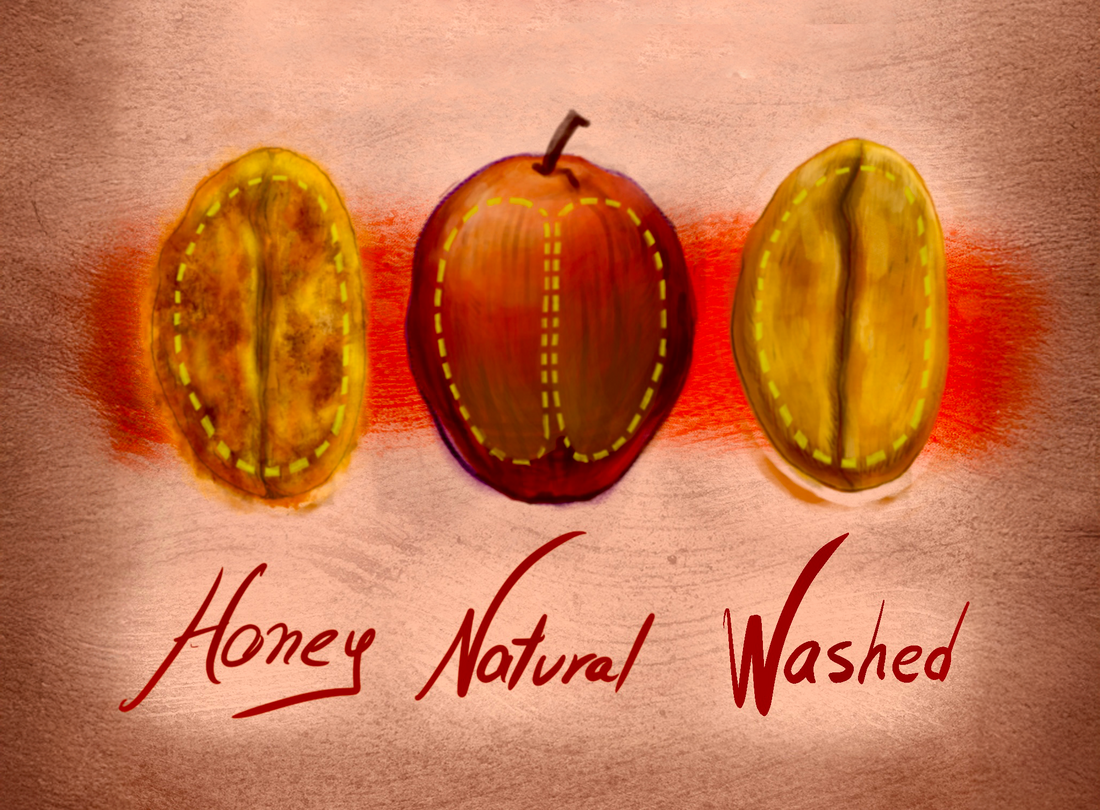
Understanding Coffee Processing (Natural, Washed, Honey)
What’s the hardest part to understand about specialty coffee?
Today we want to talk about something that has a huge impact on the taste of specialty coffee, the three coffee processing methods. Natural, Washed and Honey. This can be a confusing topic for many who are just starting to explore the world of specialty coffee.
You’ve probably seen tasting notes like “apple,” “grape,” or “berries” on coffee bags. Those flavors often come from how the coffee cherry was dried after harvesting. We prepared clear illustrations to demonstrate each process. Save our guide through the link on Instagram.
To better understand coffee processing, it helps to know the structure of the coffee cherry itself. Coffee is made up of several layers, each playing an important role in the final flavor.
Skin – the outer layer of the cherry.
Mucilage – the soft, sticky fruit pulp surrounding the bean.
Parchment – the protective shell where green coffee bean is dried.
Silver skin – a thin and transparent layer that falls off during roasting.
Green coffee bean – the seed that is finally exported and roasted.
These layers are exactly what our 3D coffee cherry model helps to visualize, making the complex journey from fruit to cup easier to understand.


Let’s dive deeper into the processes.
1. Natural Process
After harvesting, whole ripe cherries are spread out on patios or raised beds under the sun. Farmers have to carefully turn the cherries every day to prevent mold and ensure even drying. This method usually takes between 3 and 6 weeks, depending on the weather. Because the bean stays in contact with the fruit for a long time, it absorbs more sugars and compounds from the pulp. The result is a cup that is fruity, sweet, heavy-bodied, and sometimes wine-like.
2. Washed Process
The washed process, also known as the wet process, focuses on clarity and cleanliness of flavor. After harvesting, the skin and most of the mucilage are removed using pulping machines. The beans are then placed in tanks of water where they ferment for up to 24–48 hours. During this time, natural enzymes and microorganisms break down the remaining mucilage. After fermentation, the beans are washed thoroughly with clean water and then dried on patios or beds for 1–2 weeks. This method produces a bright, clean, and complex cup, often with high acidity and floral or citrus notes.
3. Honey Process
The honey process is sometimes called the semi-washed method because it sits between natural and washed. After the skin is removed, some of the sticky mucilage is deliberately left on the bean during drying. Farmers control how much mucilage remains, which creates several categories:
- Yellow honey – only a little mucilage left, producing a softer, lighter profile
- Red honey – more mucilage left, giving brighter sweetness and more body
- Black honey – the most mucilage left, closer to the natural method, fruity and intense
Drying usually takes 2–4 weeks, and beans must be turned very carefully, because the sticky layer can easily attract mold. Honey coffees often combine the clean brightness of washed with the sweet fruitiness of natural, making them unique and versatile.
Next time you pick a bag of coffee check which process it went through. It can completely transform your tasting experience.
